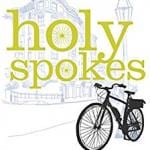Hugo Méndez (Chapel Hill) wrote a provocative article on “Did the Johannine Community Exist?” JSNT 40.3 (2020) where he questions the existence of a Johannine community because the Gospel of John and the Epistles of John are a forgery! You can read the article at sage in hypertext format.
Candida Moss gave Méndez some good publicity in her Daily Beast article Everyone’s Favorite Gospel Is a Forgery.
To me Méndez’s article feels like a strange Bauckham and Ehrman hybrid, quite interesting, but I’m not sure if I can go with John’s Gospel and letters as pseudonymous or a forgery. While I doubt the existence of an introspective and isolated Johannine community, I think John’s Gospel is anonymous and is based on the testimony of the Beloved Disciple, a Judean disciple of Jesus, who became a venerated leader in the churches in Ephesus (see NTiiW and Gospel of the Lord). Of course, some have argued that the Beloved Disciple is a fictional character, a literary invention, a type of ideal disciple. So much stuff for Johannine scholars to mull over here. Plus, I think the origins and authorship of John’s Gospel will always be something of a riddle! So Méndez’s article is a welcomed contribution to an on-going debate about John’s Gospel.
However, a good response to Méndez is provided by Johannine guru, Paul Anderson, who has written a response to Méndez over at Bible and Interpretation on On Biblical Forgeries and Imagined Communities—A Critical Analysis of Recent Criticism. It’s a good pro and con evaluation of Méndez’s argument. Anderson concludes:
The Gospel of John has been described as a stream in which a child can wade and an elephant can swim, and if it indeed is to be seen as “everyone’s favorite biography of Jesus,” the above discussion is bound to turn some waders into swimmers. With appreciation for the good work of Professors Moss, Méndez, and Ehrman, what the present engagement reflects is the conviction that the burden of proof rests on critical scholarship as well as traditional scholarship, and that’s where Second Criticality comes in. Ricoeur’s “second naïveté” is not enough, as though critical views are the last word in the reflective dialectic between traditional and critical reasonings. The fact is that critical scholars also disagree with each other (as Méndez illustrates), so it’s not enough to simply see criticism over and against tradition. Critical analysis must also be applied to critical methodologies and inferences, as well as traditional ones. Nonetheless, as the quarter of the New Testament that consists of the Johannine literature is understood more fully, perhaps early Christianity itself will become better known, challenging also our modern and postmodern understandings of the movement. And to that end, I hope this modest response furthers the critical dialogue among colleagues, as we all seek to make sense of those pesky Johannine riddles in our common quests for liberating truth.












